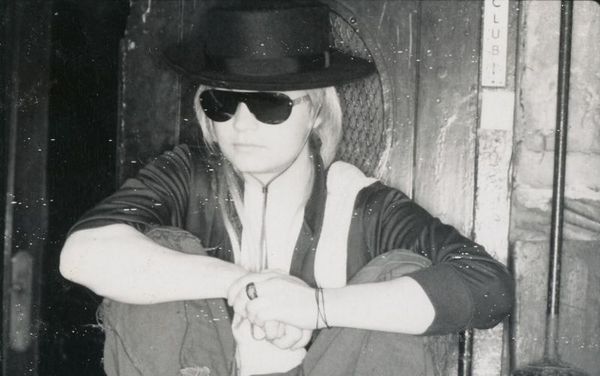Eye For Film >> Movies >> Author: The JT LeRoy Story (2016) Film Review
Author: The JT LeRoy Story
Reviewed by: Amber Wilkinson

It’s testimony to the bizarrely multi-faceted nature of the story of JT Leroy that this film would make an excellent double-bill with 2014’s documentary by Marjorie Sturm, The Cult Of JT Leroy. Despite both telling the same basic story – of a gender-fluid, HIV positive son of a prostitute who wrote about his life in Sarah and The Heart Is Deceitful Above All Things and became beloved by stars including Bono and Winona Ryder before it emerged that he was a fiction created by a troubled Brooklyn mum – they come at it from fundamentally different perspectives.
Sturm’s film was unauthorised and, as a result, doesn’t feature the real author Laura Albert today, instead opening out into questions regarding the cult of celebrity and how much it is created as much by those on the receiving end as those doing the creating. Jeff Feuerzeig, meanwhile, has access to not only the first-person narration of Albert herself – an unsurprisingly compelling, if unreliable storyteller – but also free run of a massive archive of material built up by the writer during the JT years. This includes scores of taped telephone conversations, from the very inception of LeRoy, along with conversations in which Albert also ‘played’ his agent Speedie among other characters, plus video footage and photographs of her childhood.

The result is a fascinating, if skewed, account of creativity gone wild, as Albert talks about JT in the third person, noting: “A lot of other boys who had been through me… they didn’t live.” She explains his importance to her as an ‘avatar’, although there’s a sense of having to want her cake and eat it in the fact that she at once builds a picture of herself as ‘damaged’ by her own childhood experiences – assertions which leave many questions unanswered - and yet simultaneously suggests the creation of LeRoy was nothing to do with therapy and everything to do with punk performance art. She also talks about how she persuaded her husband Geoff Knoop and his sister Savannah to take on roles in her elaborate fiction, with Savannah becoming LeRoy for the cameras. Interestingly, despite Savannah having some sort of romance with actor Michael Pitt and Asia Argento, neither seems to have spotted – or wanted to point out, perhaps – that this guy was a gal.
Feuerzeig does an excellent job of sifting Albert’s enormous archive, using animation by Stefan Nadelman to help the words of LeRoy spring up from the page, although the use of sound effects is sometimes OTT, such as when, for example, a story of Savannah throwing up through stage nerves is accompanied by the noise of someone retching, showing a lack of faith in an audience’s ability to visualise what is being said. There is also a lack of interrogation of Laura as she speaks to camera and a sense of the additional voices here having been carefully curated in order to retain sympathy. Some of the more distressing things Albert said to celebrities to elicit sympathy (featured considerably more heavily in Sturm’s documentary) are also omitted.
That said, the film does raise very interesting and thorny questions regarding the nature of talent and perception. Many who sang Albert’s praises when they believed they were fact became lukewarm on the discovery they were fiction – a section, Albert points out, her books had always been listed within. The truth that these intense, emotional works were entirely made up should, in theory, have resulted in Albert’s talent being more celebrated not less, only goes to show that as films like Exit Through The Gift Shop and Con Artist have also theorised, people are often as willing to buy into the celebrity of an artist as the art itself.
Reviewed on: 28 Jul 2016

















